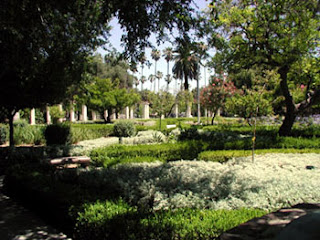From the Hornitos (landmark #333) we backtrack and go up Highway 49 which they’re calling around these parts the ‘
Inside the Magnolia
You don’t really notice it at first, but they’ve buried the utilities here and that helps preserve the look of the many old structures still standing. Like clockwork, the town burned down three times, always in July and always twenty years apart; in 1859, 1879, and 1899.
It was after the 1899 fire that the ‘Gold Rush of 1899’ came. The story was that one of the residents had hidden his gold coins in the walls of one of the structures that burned and after that rubble was used for potholes in the streets, winter rains began uncovering the coins. The rush was on and the streets were soon impassible.
Coulterville had a lot going for it, not the least of which was its crossroads location and proximity to other towns, mines, and camps, making it a natural center for commerce. That’s what brought George Coulter and family here in the first place. Also, after placer mining faded out Coulterville got a second boost by the fact it sat on huge deposits of gold baring quartz, and that hard rock mining yielded gold for years to come.
Coulter built a hotel to accommodate the new traffic and came up with an ingenious water system for it consisting of a pump driven by a flywheel that was forty feet around and had a two foot rim. He then trained he two black Newfoundland dogs operate it by running inside the wheel, and when the water tank became full, the wheel stopped automatically and the dogs were free to resume duties and waiters and bellhops. Note to patrons: ‘Go easy on the bathwater;.
This is the last dispatch for
Plaque inscription: NO. 332 COULTERVILLE (S)- George W. Coulter started a tent store here in early 1850 to supply the hundreds of miners working the rich placers of Maxwell, Boneyard, and Black Creeks. He also built the first hotel, water for it was pumped from a well by two
Location: 5004 Main St. Coulterville, 95311 County Park, NE corner of intersection of County Hwy J20 and State Hwy 132 (P.M. 44.8), Coulterville N 37° 42.684 W 120° 11.853 Marker is at the intersection of State 49 and Main Street, on the right when traveling south on 49.
GPS: 37.710307,-120.197017



































